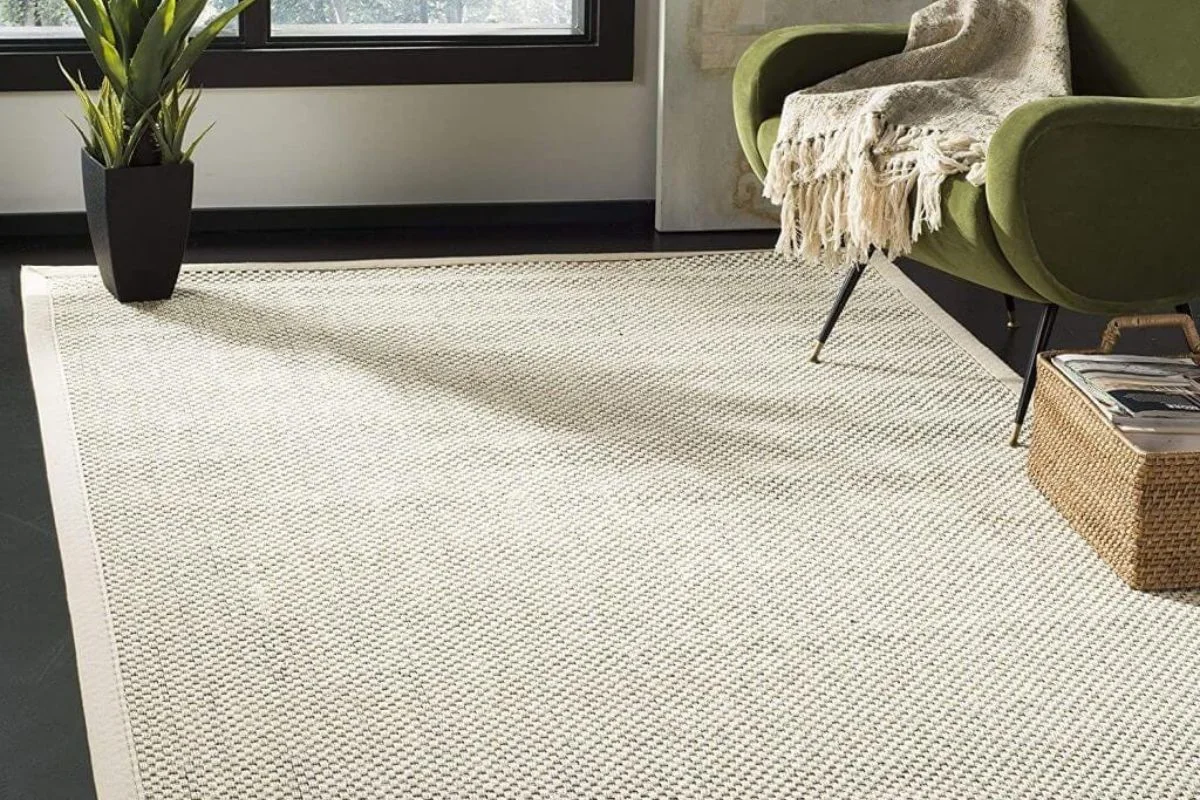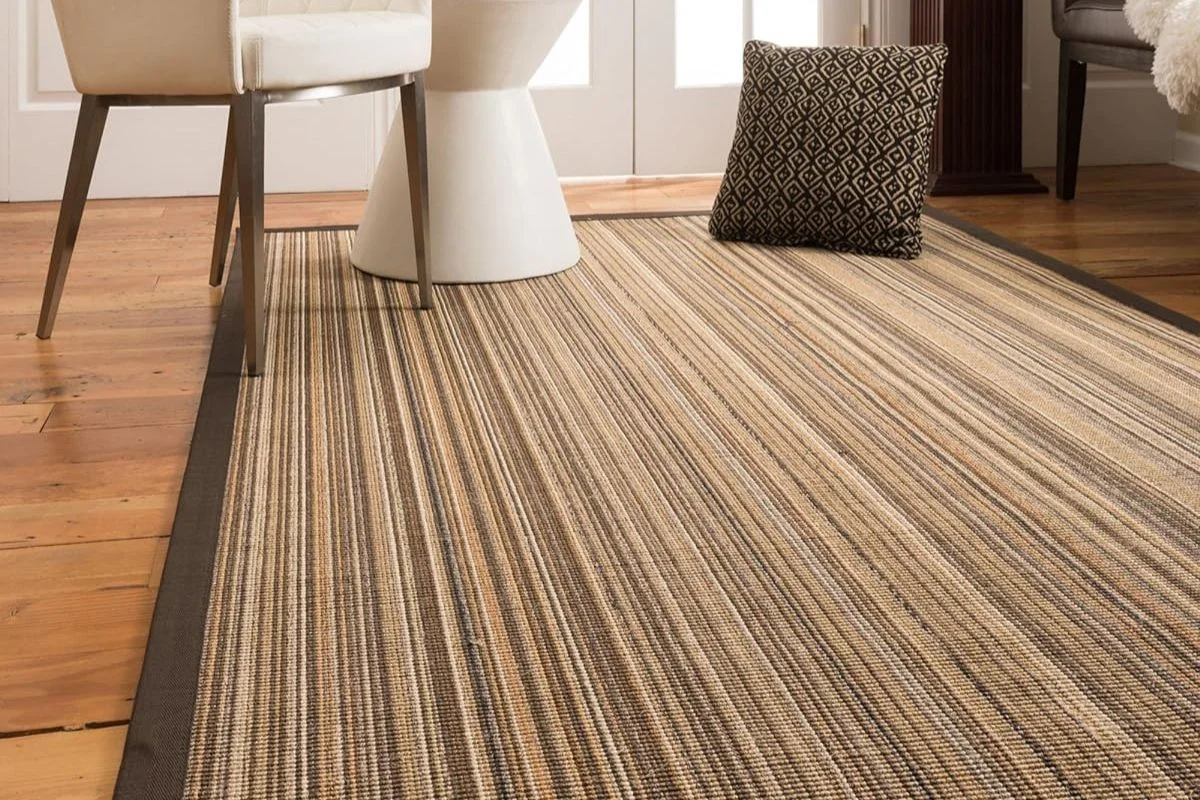Welcome to “The Ultimate Guide to Sisal Carpet: Natural Elegance for Your Home.” Sisal carpet is a versatile and eco-friendly flooring option that adds a touch of natural elegance to any interior space. In this comprehensive guide, we’ll explore everything you need to know about sisal carpet, from its benefits and advantages to tips for choosing the right sisal carpet for your home, installation techniques, maintenance tips, and design inspiration.
Sisal carpet is made from the fibers of the sisal plant, a sustainable and renewable resource known for its strength and durability. With its natural beauty, texture, and earthy appeal, sisal carpet brings warmth and sophistication to a variety of interior styles, from coastal and rustic to modern and minimalist.
Throughout this guide, we’ll delve into the advantages of sisal carpet, comparing it to other flooring options to help you make an informed decision for your space. We’ll discuss factors to consider when choosing sisal carpet, including material, style, and durability, as well as installation tips and maintenance techniques to keep your carpet looking its best for years to come
Definition of Sisal Carpet
A sisal carpet refers to a floor covering crafted from sisal fibers, which are derived from the leaves of the Agave sisal Ana plant. Sisal carpets are known for their natural and eco-friendly qualities, offering a sustainable alternative in interior design. These carpets showcase a distinctive texture and durability, making them a popular choice for various spaces within homes or commercial settings. The weaving and crafting of sisal carpets result in a floor covering that not only adds a touch of natural elegance to the surroundings but also aligns with environmentally conscious design choices.
A sisal carpet refers to a floor covering made from natural fibers extracted from the agave plant, specifically the Agave sisal Ana. Sisal fibers are known for their durability, strength, and sustainability. These carpets are crafted by weaving or tufting sisal fibers into a backing material, creating a textured and resilient surface suitable for flooring. Sisal carpets are valued not only for their aesthetic appeal, characterized by a natural and earthy texture, but also for their eco-friendly attributes, contributing to sustainable interior design practices.
What is Sisal, and How are Sisal Carpets Made
Sisal is a natural fiber derived from the leaves of the Agave sisal Ana plant, a species native to Mexico but now cultivated in various tropical and subtropical regions worldwide. The fiber is known for its strength, durability, and sustainability.
How are Sisal Carpets Made?
Harvesting Sisal Fibers:
Sisal fibers are obtained by harvesting the long, sword-shaped leaves of the Agave sisalana plant. Harvesting is typically done when the plant reaches maturity, which takes several years.
Extraction and Washing:
The harvested leaves are crushed to extract the fibers. The extracted fibers undergo a thorough washing process to remove impurities and the green outer layer of the leaves.
Drying:
The cleaned sisal fibers are then dried to prepare them for the subsequent manufacturing steps.
Dyeing (Optional):
Depending on the desired color, sisal fibers may undergo a dyeing process. Sisal carpets often retain their natural color, but dyeing allows for a broader range of design possibilities.
Spinning:
The dried and possibly dyed sisal fibers are spun into yarns. The spinning process aligns the fibers, enhancing their strength and making them ready for weaving or tufting.
Weaving or Tufting:
Weaving: In traditional sisal carpet production, the yarns are woven on a loom to create the carpet’s structure.
Tufting: In modern manufacturing, sisal yarns are inserted into a backing material, creating loops. The loops are then sheared to achieve the desired carpet height.
Backing Attachment:
The woven or tufted sisal carpet is attached to a backing material for stability. This backing can be made from various materials, including jute or synthetic materials.
Finishing:
The sisal carpet undergoes finishing processes, which may include treatments for stain resistance or additional texture enhancements.
Cutting and Sizing:
The final step involves cutting the carpet to the desired size and shape. This can be done during the manufacturing process or on-site during installation.
The Practical Benefits of Using Sisal Carpets
Sisal carpets offer a range of practical benefits, making them a popular and sustainable choice for flooring in various settings. Here are some key practical advantages of using sisal carpets:
Durability:
Sisal fibers are known for their robust nature and resistance to wear and tear. Sisal carpets, therefore, exhibit exceptional durability, making them suitable for high-traffic areas in homes and commercial spaces.
Resilience:
The natural resilience of sisal fibers allows the carpet to bounce back to its original shape after compression. This quality helps maintain the carpet’s appearance and structural integrity over time.
Low Maintenance:
Sisal carpets are relatively low-maintenance. Regular vacuuming is usually sufficient to keep them clean and free from dust and debris. Additionally, sisal’s natural texture can hide minor dirt and stains effectively.
Stain Resistance:
Sisal fibers inherently repel stains, making sisal carpets resistant to spills and dirt. This feature is particularly advantageous in areas prone to accidental spills or where frequent cleaning might be challenging.
Natural Aesthetics:
Sisal’s natural and earthy appearance adds a touch of warmth and elegance to any space. The subtle texture and neutral tones of sisal carpets contribute to a timeless and sophisticated aesthetic.
Versatility in Design:
Sisal carpets come in various weaves, patterns, and textures, offering versatile design options. Whether you prefer a simple, minimalist look or a more intricate pattern, sisal can complement a range of interior styles.
Temperature Regulation:
Sisal’s natural thermal properties contribute to temperature regulation in indoor spaces. The carpet helps create a comfortable environment by providing insulation against both heat and cold.
Sound Absorption:
Sisal’s dense fibers contribute to effective sound absorption, reducing echoes and noise in a room. This makes sisal carpets an excellent choice for spaces where noise control is important, such as offices or living rooms.
Sustainable Material:
Sisal is an eco-friendly and renewable resource. The agave plant, from which sisal fibers are derived, requires minimal water and pesticides to grow. Choosing sisal carpets aligns with sustainable living practices.
Hypoallergenic:
Sisal carpets are naturally hypoallergenic. Unlike some synthetic materials, sisal does not trap allergens, making it a healthier choice for individuals with allergies or respiratory sensitivities.
Comfortable Underfoot:
While sisal is firm and supportive, it still provides a comfortable surface underfoot. This makes sisal carpets suitable for various areas in the home, including living rooms, bedrooms, and hallways.
Biodegradability:
Sisal fibers are biodegradable, contributing to the reduction of environmental impact. At the end of their life cycle, sisal carpets break down naturally, minimizing waste.
The Uses of Sisal in Interior Design
Sisal, a versatile natural fiber derived from the Agave sisalana plant, finds a multitude of uses in interior design. Its unique characteristics make it a popular choice for various applications, adding both functionality and aesthetic appeal to interior spaces. Here are some common uses of sisal in interior design:
Sisal Carpets and Rugs:
- Sisal carpets and rugs are perhaps the most well-known applications. The natural texture and durability of sisal fibers make them ideal for floor coverings. Sisal carpets come in a range of weaves, patterns, and sizes, offering versatile design options for different rooms.
Sisal Wall Coverings:
- Sisal wall coverings, also known as sisal wallpaper, bring a touch of natural elegance to interior walls. These coverings provide texture and warmth, creating a visually appealing backdrop. Sisal wall coverings are available in various patterns and colors to suit different design preferences.
Sisal Upholstery:
- Sisal fibers can be woven or blended with other materials to create upholstery fabrics. Sisal upholstery adds a tactile and organic element to furniture pieces, providing a durable and stylish option for sofas, chairs, and ottomans.
Sisal Window Treatments:
- Sisal can be incorporated into window treatments, such as sisal blinds or curtains. These natural window coverings contribute to a cohesive design scheme while allowing for light control and privacy.
Sisal Decorative Accessories:
- Sisal’s versatility extends to decorative accessories. Items like sisal baskets, lampshades, and table runners bring a touch of natural texture to spaces. These accessories can be strategically placed to enhance the overall design.
Sisal Furniture:
- Sisal fibers can be woven into furniture pieces or used as decorative accents. Sisal-covered furniture adds a tactile and visually interesting element to interiors, creating a harmonious connection with other sisal elements in the space.
Sisal Wall Art:
- Sisal can be creatively used to make wall art or sculptures. Its natural color and texture lend themselves well to artistic expressions, allowing designers to incorporate unique and sustainable pieces into interior spaces.
Sisal Table Runners and Placemats:
- For dining areas, sisal table runners and placemats provide a rustic and earthy aesthetic. These functional accssories not only protect the table surface but also add a layer of texture to the dining experience.
Sisal Room Dividers:
- Sisal can be used to create room dividers or screens. These dividers add visual interest, define spaces within a room, and contribute to a sense of privacy while maintaining an open feel.
Sisal Stair Runners:
- Sisal stair runners add both style and practicality to staircases. The natural fibers provide traction, reducing the risk of slipping, while the design adds a cohesive element to the overall interior.
Conclusion
In conclusion, the enduring allure of sisal in interior design lies in its remarkable blend of sustainability, functionality, and aesthetic charm. As a natural fiber sourced from the agave plant, sisal has transcended its traditional applications, evolving into a versatile element that elevates various facets of interior spaces.





